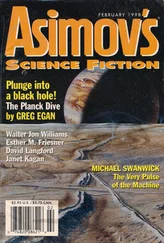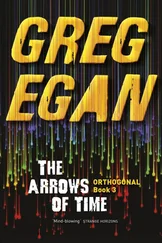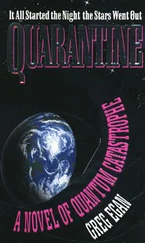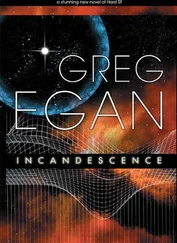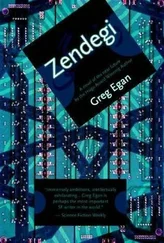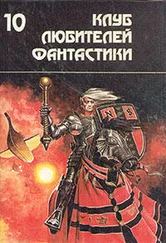Greg Egan - The Eternal Flame
Здесь есть возможность читать онлайн «Greg Egan - The Eternal Flame» весь текст электронной книги совершенно бесплатно (целиком полную версию без сокращений). В некоторых случаях можно слушать аудио, скачать через торрент в формате fb2 и присутствует краткое содержание. Жанр: Фантастика и фэнтези, на английском языке. Описание произведения, (предисловие) а так же отзывы посетителей доступны на портале библиотеки ЛибКат.
- Название:The Eternal Flame
- Автор:
- Жанр:
- Год:неизвестен
- ISBN:нет данных
- Рейтинг книги:4 / 5. Голосов: 1
-
Избранное:Добавить в избранное
- Отзывы:
-
Ваша оценка:
- 80
- 1
- 2
- 3
- 4
- 5
The Eternal Flame: краткое содержание, описание и аннотация
Предлагаем к чтению аннотацию, описание, краткое содержание или предисловие (зависит от того, что написал сам автор книги «The Eternal Flame»). Если вы не нашли необходимую информацию о книге — напишите в комментариях, мы постараемся отыскать её.
The Eternal Flame — читать онлайн бесплатно полную книгу (весь текст) целиком
Ниже представлен текст книги, разбитый по страницам. Система сохранения места последней прочитанной страницы, позволяет с удобством читать онлайн бесплатно книгу «The Eternal Flame», без необходимости каждый раз заново искать на чём Вы остановились. Поставьте закладку, и сможете в любой момент перейти на страницу, на которой закончили чтение.
Интервал:
Закладка:
Assunto raised a hand for silence, and Carla let him think the whole thing over. Finally he said, “When, exactly, does this probability get turned into a fact? You have the luxagen wave changing shape under the influence of the light alone, but then at some point it’s supposed to interact with the rest of the solid, which finally determines its fate. But the probability keeps changing, as the wave changes shape. So what probability do you use?”
Carla said, “It makes no difference exactly when the interaction happens, so long as it happens often enough, and so long as the probability grows in direct proportion to the time. Suppose the probability is one in a gross after one pause, two in a gross after two pauses, and so on. If the rest of the solid only interacts with each luxagen once every pause, the rate of tarnishing will be one luxagen per gross per pause. But even if the interaction takes place far more frequently than that, each time it happens the probability will have risen to a much smaller value than it would have reached if the luxagen had been left undisturbed for longer. The two effects—the lower probability and the greater number of interactions—almost cancel each other out, and you end up with a simple exponential decay curve.”
She sketched the result.
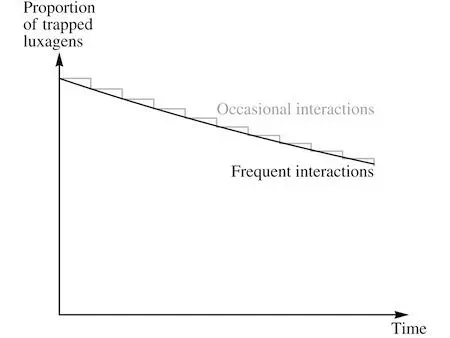
Assunto was not impressed. “Almost every process looks linear on a short enough time scale, so whatever’s going on with the tarnishing the net result could end up looking like exponential decay. If I gave you the sunstone for one more experiment, and you came back to me with a curve like that, what would it prove? Nothing.”
“One curve would be meaningless,” Carla agreed. “But this is where the bad news finally redeems itself. When the energy gap is small enough for a light wave to bridge the two frequencies, the rate at which the probability grows is just proportional to the intensity of the light. But the tiers we found with the mirrorstone suggest that the energy gap is four times too big for that—and for lower frequencies of light, five times too big. In which case, the rate is no longer proportional to the intensity itself: it’s proportional to the fourth or fifth power.”
Assunto grasped the significance of this immediately. “So it’s a higher-order effect,” he said. “The light wave creates a small disturbance in the energy valley, and the effect of that isn’t perfectly linear—so a complete description would have to include ever-smaller terms that depend on the square of the wave, the cube, the fourth power…”
“And the fourth power of the wave,” Carla added, “contains a frequency four times higher than that of the wave itself. There is no light with a frequency high enough to bridge the energy gap in a stable solid—but the fourth power of the same disturbance oscillates four times faster.”
“So how are you proposing to test all this?” Assunto pressed her.
“In the past, I’ve wasted sunstone,” Carla admitted. “There were things I could have measured that I didn’t even try to record. This time I’ll do it properly, once and for all. With a system of apertures and shutters, in a single run I can expose different parts of the same slab of mirrorstone to different intensities of light, for different lengths of time. The variation in the tarnishing over time should give us the exponential decay curves—and the variation with intensity should confirm the fourth-power rule in the first tier, and the fifth-power rule in the next. If we do find those power rules, surely that will be a sign that we’re on the right track.”
Assunto said, “Last time, the tiers were meant to mark the number of ‘photons’ each luxagen needed to make in order to break free.”
“They still do!” Carla replied. “These powers of the light’s intensity are the only way I know to calculate the tarnishing rates, but that doesn’t mean photons are out of the picture. When a luxagen changes its energy level, it still has to add a whole number of photons to the light: four or five, just as before.”
“But what drives the luxagen from one level to another in the first place?” Assunto answered the question himself. “Not a bombardment with particles, but the shaking of a wave.”
Carla couldn’t deny that. Patrizia’s interpretation of the scattering experiment in terms of colliding particles seemed irrefutable, but as yet there was no way to describe the tarnishing in the same language. They were still groping their way toward the truth, and the argument everyone had once thought settled in the days of Giorgio and Yalda was refusing to lie quietly in its grave.
Assunto said, “I’ll give you the sunstone for one more experiment, but that’s it. No more tinkering with the theory and trying again. If you don’t find the power rules you’ve predicted, you’ll have to accept that your ideas have been refuted and move on. Agreed?”
Carla had known that they were approaching this point, but to hear it put so starkly gave her pause. She could return to her collaborators and work through everything one more time: checking their calculations, revisiting their assumptions. Maybe they’d missed something crucial that would lead them to change their predictions—or something that could sweep away the lingering confusion and provide them with a surer bet.
But in less than two stints, Assunto would be answering to an entirely new Council, and there was no guarantee that he’d still have the power to offer her any sunstone at all. If they ended up losing the chance to perform this last experiment, there were no calculations that could tell them whether or not they’d been wasting their time. They needed to know the result itself, even more than they needed to be right.
Carla said, “Agreed.”
19
Carlo abandoned the voles a bell earlier than usual to join the celebration in the hall below the main physics workshop. The corridors along the way were lined with posters for Silvano’s next election rally, promising voters the chance to MAKE YOUR CHILDREN PROUD.
Carla had urged him to invite all his colleagues and their families, but as far as he could see only Amanda and her co had turned up. The whole chamber was festooned with chains of small lamps, and—rather cruelly for the women, Carlo thought—there were baskets of seasoned loaves attached to every cross-rope, putting out an aroma that made it hard even for a moderately well-fed man to focus on anything else.
Patrizia, Carla’s young student, clung to a rope near the center of the hall, fending off an endless barrage of congratulations. “It took the three of us to get this far,” she kept saying. “And I didn’t solve the stability problem, that was Carla.” Her modesty appeared entirely sincere, but when Carlo moved among the clusters of physicists orbiting this star all he heard was talk of the urgent need to start applying “Patrizia’s principle” to some new problem or other.
He tried not to begrudge the girl her share of acclaim, but it undercut his sense that he ought to join in the rejoicing out of simple loyalty. What was there to celebrate, really, in this minuscule advance in the theory of solids? It had made Carla happy, and no doubt it would have some kind of payoff eventually, but what urgent need had it fulfilled? The ancestors would be oblivious to however long it took to find the cure to their woes. The travelers didn’t have that luxury.
Carla caught up with him. “Are you enjoying yourself?” she asked.
“Of course.”
“You don’t seem to be talking to anyone.”
Carlo said, “I get all the luxagen-speak I need from you.”
Читать дальшеИнтервал:
Закладка:
Похожие книги на «The Eternal Flame»
Представляем Вашему вниманию похожие книги на «The Eternal Flame» списком для выбора. Мы отобрали схожую по названию и смыслу литературу в надежде предоставить читателям больше вариантов отыскать новые, интересные, ещё непрочитанные произведения.
Обсуждение, отзывы о книге «The Eternal Flame» и просто собственные мнения читателей. Оставьте ваши комментарии, напишите, что Вы думаете о произведении, его смысле или главных героях. Укажите что конкретно понравилось, а что нет, и почему Вы так считаете.

